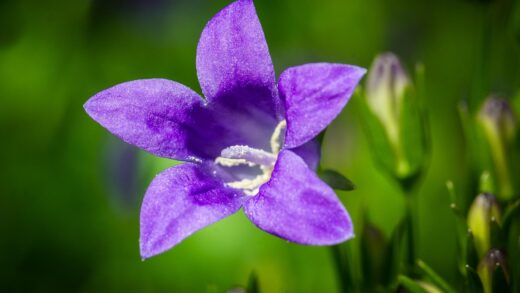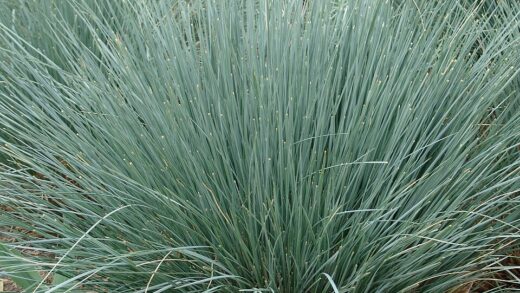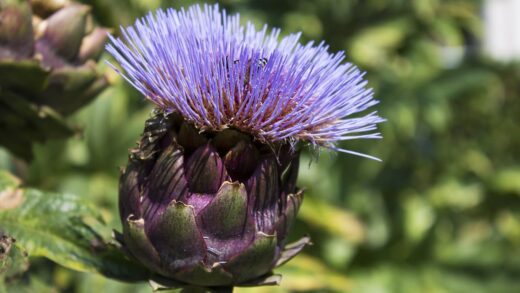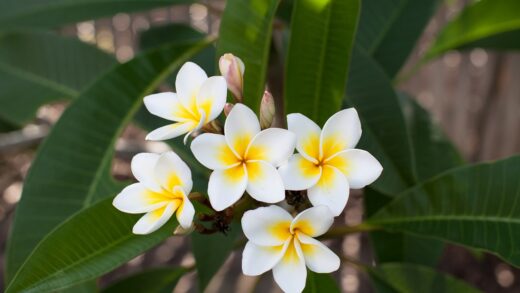Understanding the precise water needs of an azalea is fundamental to its cultivation, as this is an area where many gardeners inadvertently cause significant stress to their plants. Azaleas possess a fine, shallow root system that makes them particularly sensitive to both drought and overwatering. Achieving the correct balance is not about adhering to a rigid schedule, but rather about developing an intuitive sense of the plant’s needs based on observation of the soil, the weather, and the plant itself. The goal is to maintain a consistently moist, but not waterlogged, environment for the roots, mimicking the damp, well-drained floor of their native woodland habitat. Mastering this aspect of their care is a critical step towards lush foliage and a profusion of stunning blooms.
The structure of the azalea’s root system is the primary reason for its specific water requirements. Unlike plants with deep taproots that can seek out moisture from lower soil layers, azaleas have a fibrous mass of roots that colonizes the top few inches of soil. This upper layer of soil is the first to dry out during periods of warm or windy weather. Consequently, azaleas can begin to show signs of drought stress relatively quickly, even when deeper soil layers still contain moisture. This makes them highly dependent on regular rainfall or supplemental irrigation to keep their immediate root zone sufficiently hydrated.
Conversely, this same delicate root system is extremely susceptible to the fatal effects of root rot. When the soil becomes saturated with water for extended periods, the air pockets in the soil are filled, depriving the roots of the oxygen they need to function and survive. This anaerobic environment is the perfect breeding ground for water mold fungi, such as Phytophthora, which attack and destroy the root system. This is why excellent drainage is a non-negotiable prerequisite for growing azaleas. It is crucial to remember that more azaleas are killed by overwatering and poor drainage than by any other single cause.
Therefore, the mantra for watering azaleas is “deeply and infrequently.” When you do water, it should be a long, slow soaking that allows the water to penetrate the entire root zone, rather than a quick, superficial sprinkling that only wets the surface. A thorough watering encourages the roots to grow more deeply into the available soil, making the plant slightly more resilient during dry spells. The frequency of these deep waterings will be dictated entirely by environmental conditions, and the responsible gardener must learn to assess these conditions rather than watering by the calendar.
Factors influencing water needs
The amount of water an azalea needs is not a static figure; it is a dynamic variable influenced by a multitude of factors that change throughout the seasons. The most obvious of these is the weather. During hot, dry, and windy periods, the rate of evapotranspiration—the loss of water from both the soil and the plant’s leaves—increases dramatically. In these conditions, you will need to monitor your plants closely and provide supplemental water more frequently. Conversely, during cool, cloudy, or rainy periods, the need for additional irrigation will be significantly reduced or eliminated entirely.
More articles on this topic
The type of soil in your garden also plays a critical role in determining watering frequency. Sandy soils drain very quickly and have a low water-holding capacity, meaning azaleas planted in this type of medium will need to be watered more often. On the other hand, heavy clay soils retain moisture for much longer periods. While this may sound beneficial, it often leads to dangerously waterlogged conditions for azaleas. This is why amending heavy clay soil to improve its structure and drainage is so vital. A well-amended, loamy soil that is rich in organic matter offers the ideal balance, retaining adequate moisture while allowing excess water to drain away freely.
The age and size of the plant are also important considerations. A newly planted azalea has a limited root system that is not yet established in the surrounding soil. For its entire first growing season, it is almost entirely dependent on you to provide consistent moisture to its original root ball. These young plants may require watering two or three times a week. A large, mature, well-established azalea, however, has a much more extensive root system and is far more resilient. While it will still require deep watering during prolonged droughts, it can typically withstand short dry spells much better than a juvenile plant.
Finally, the specific location or microclimate where the azalea is planted has a significant impact. An azalea planted in a location that receives several hours of morning sun will dry out faster than one planted in deeper shade. Similarly, a plant in a windy, exposed site will lose moisture more rapidly than one in a sheltered position. Even the presence of large, thirsty trees nearby can affect water needs, as their extensive root systems will compete with the azalea for available soil moisture. Careful observation of these individual circumstances is essential for tailoring your watering practices effectively.
The best watering techniques
The method you use to water your azaleas is just as important as the frequency and amount. The most effective technique is to apply water slowly and directly to the soil over the root zone. Using a soaker hose or a drip irrigation system is ideal, as these methods deliver water at a slow rate that allows it to be absorbed deep into the soil with minimal runoff or evaporation. This ensures that the entire root ball becomes saturated, not just the surface. If you are watering by hand with a hose, use a watering wand with a soft spray setting and allow the water to run slowly at the base of the plant for a considerable time.
More articles on this topic
Avoid using overhead sprinklers whenever possible. While they may seem efficient for covering a large area, they are problematic for azaleas for several reasons. Firstly, a significant amount of water can be lost to evaporation before it even reaches the ground. Secondly, and more importantly, wetting the foliage, especially in the evening, creates a damp environment that can promote the development of fungal diseases like petal blight and leaf spot. If you must use a sprinkler system, run it early in the morning so that the leaves have ample time to dry completely in the sun during the day.
The concept of watering deeply cannot be overemphasized. A light sprinkling that only moistens the top inch of soil is largely ineffective and can even be detrimental. It encourages the development of a very shallow root system that is highly vulnerable to drought stress. To ensure you are watering deeply enough, you can use a trowel or a soil probe to check the moisture level after you have finished watering. The soil should be damp to a depth of at least six to eight inches. This deep moisture reservoir will sustain the plant for a much longer period than a superficial wetting.
The quality of the water is another consideration for these acid-loving plants. Many municipal water sources are alkaline and have a high mineral content. Regular, long-term use of this type of water can gradually raise the soil’s pH, which can interfere with the azalea’s ability to absorb essential nutrients, particularly iron. Rainwater is the perfect water source for azaleas as it is naturally acidic and free of treated minerals. Installing a rain barrel to collect runoff from your roof is an excellent way to provide your azaleas with the best quality water possible, especially if your local tap water is known to be hard or alkaline.
Recognizing signs of water stress
Your azalea will provide clear visual cues when it is experiencing water-related stress, and learning to read these signals is a vital skill for any gardener. The most common sign of underwatering, or drought stress, is wilting. The leaves will begin to droop and may even start to curl inwards as the plant tries to conserve moisture. If the drought is prolonged, the leaves will turn yellow, then brown and crispy, often starting at the tips and margins. It is important to act quickly when you see wilting, as the fine roots can be permanently damaged if the soil is allowed to become completely dry.
Paradoxically, the above-ground symptoms of overwatering can look remarkably similar to those of underwatering. A plant suffering from root rot due to excess water will also exhibit wilting and yellowing leaves. This is because the damaged, oxygen-starved roots are no longer able to absorb water and nutrients to supply the foliage, so the plant is effectively dehydrating even though it is sitting in soggy soil. The key difference can be found by examining the soil and the roots. If the soil is constantly wet and the roots are brown and mushy instead of firm and white, overwatering is the culprit.
Another sign of chronic overwatering or poor drainage is a general lack of vigor and stunted growth. The plant may fail to produce new leaves or shoots, and the overall color of the foliage may be a pale, sickly green or yellow rather than a rich, deep green. In some cases, you might observe dieback, where entire branches begin to die off for no apparent reason. These are all indicators that the root system is compromised and unable to support the healthy growth of the plant.
It is also important to differentiate between temporary wilting and a true need for water. On a very hot, sunny afternoon, it is not uncommon for an azalea’s leaves to droop slightly, even if the soil is moist. This is a natural response called temporary wilt, where the plant loses water through its leaves faster than the roots can absorb it. In these cases, the plant will usually recover on its own as temperatures cool in the evening. Always check the soil moisture before you react to wilting leaves in the middle of a hot day to avoid the risk of overwatering.
Mulching for moisture conservation
Applying and maintaining a layer of organic mulch is one of the most beneficial practices for managing the water needs of azaleas. A two- to three-inch layer of a suitable mulch spread over the plant’s root zone acts as a protective blanket for the soil. Its primary benefit is the significant reduction of water evaporation from the soil surface. This means that the soil stays moist for longer periods after watering or rainfall, reducing the overall frequency of irrigation needed and helping to protect the shallow roots from drying out too quickly.
The type of mulch used for azaleas is important. Acidic, organic mulches are the best choice as they not only conserve moisture but also contribute to the low-pH environment that these plants require. Excellent options include pine straw, shredded pine bark, oak leaves, or composted wood chips. As these materials slowly decompose, they enrich the soil with organic matter, improve its structure, and provide a slow-release source of nutrients. Avoid using materials like fresh wood chips which can temporarily deplete nitrogen from the soil as they decompose.
In addition to moisture conservation, mulch plays a crucial role in regulating soil temperature. In the heat of summer, a layer of mulch helps to keep the soil and the delicate root system cool. In the winter, it acts as insulation, protecting the roots from extreme cold and the damaging effects of repeated freezing and thawing cycles. This temperature moderation creates a more stable and less stressful environment for the plant throughout the year. Mulch is also highly effective at suppressing the growth of weeds, which would otherwise compete with the shallow-rooted azalea for both water and nutrients.
Proper application of mulch is key to reaping its benefits without causing harm. The mulch should be spread evenly over the entire root zone, which typically extends out to the plant’s drip line (the edge of its canopy) and slightly beyond. However, it is critically important to pull the mulch back a few inches from the main stem or trunk of the azalea. Piling mulch directly against the stem can trap moisture, which promotes rot and decay at the base of the plant and can create a hiding place for damaging insects and rodents. A well-mulched azalea is a healthier, more water-efficient, and more resilient plant.


















